UCO/Lick ObservatoryMary Lea & C. Donald ShaneObservational Astronomy WorkshopOctober 24 - October 28, 2013Lick Observatory, Mt Hamilton, CA |
||
|
Registration:
Biographies |
Mary Lea Shane (née Heger), 1897-1983 Beginning in 1919, while persuing observations at Lick Observatory in support of her doctoral work in which she detected the presence of Sodium atoms in interstellar space (a major discovery in itself), Mary Lea Heger also discovered the first examples of several hundred spectral absortion features that subsequently came to be recognized as the ubiquotous and enigmatic Diffuse Interstellar Bands (DIBs) - and simultaneously provided the first detection of interstellar molecular chemistry. Observed within our Galaxy, the Megallanic clouds and on cosmological scales, DIBs remain a substantial field of research. Nevertheless, DIBs remain mysterious: not a single feature has been identified with laboratory spectra. Identifying the DIB carriers has been called 'the longest-standing mystery in all of spectroscopy'. As the wife of the Director of Lick Observatory, Mary Lea Shane became a widely-know scientific hostess and founded the Archives of Lick Observatory, which were renamed in her honour in 1982 and reside in the McHenry library at UC Santa Cruz. |
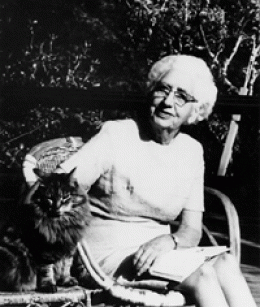
|
|
C. Donald Shane, 1895-1983 C. Donald Shane was a native Californian of Irish heritage, whose parents were both school teachers. During WWI he taught marine navigation and following graduation between 1920 and 1941 progressed within UC Berkeley to become a department Chair. During WWII, Shane was assistant director for scientific personnel, at LANL for the 'Manhatten Project', under J. Robert Oppenheimer and witnessed the test of 'the gadget' at the 'trinity' site on 16 July 1945. From war's end to 1958 Shane served as Director of Lick Observatory, initiating and virtually completing the 120-inch reflector, named in his honour in 1978. In 1946 Shane first proposed the use of cross dispersion in high resolution astronomical spectra and therefore is credited with the concept of the astronomical Echelle spectrograph - 'the greatest advance in spectroscopy since the invention of the concave grating.' An experienced spectroscopist with early interests in Carbon stars, variables, novae and Fabry-Perot studies of solar absorbtion lines, between 1947-1954 Shane lead a monumental program to examine the distribution of galaxies using the 20-inch Carnegie astrograph at Lick: dividing 1246 photographic plates into 1.5 million 10x10 arcminute squares and counting the galaxies therein. The only existing statistically uniform comprehensive data set covering a large fraction of the celestial sphere, the 'Shane-Wirtanen Galaxy Counts' were recognized (e.g. P. J. E. Peebles) as a gold mine for cosmology. The pronounced clustering of galaxies earlier reported by Harlow Shapley was confirmed and aggregations (now known as superclusters) were revealed for the first time. Personable, intelligent, hard working, absolutely trustworthy and a raconteur of the first order, Shane interacted with prominent contemporaries, including: Elizabeth L. Scott (Scott Effect), Edwin Hubble (advisor to 120-inch project), Nicholas Mayall (staff astronomer), Fred Whipple (graduate student, UC Berkeley). His friends included Fleet Admiral Chester Nimitz and the Prime Minister of Iceland. As board member of AURA, Shane was involved in founding KPNO and CTIO. He was a prime motivator for the construction of New Zealand's premier astronomical observatory: Mt John University Observatory. Shane also produced a shallow depth, wide-field photographic survey of the Northern sky: the Lick Sky Atlas - the southern complement of which was undertaken at Mt John. |
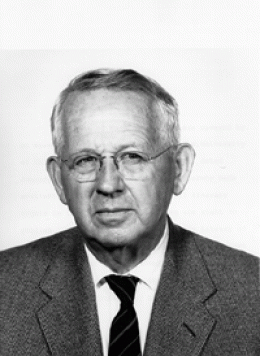
|
|
|
Virginia Trimble Virginia Trimble is Professor of Physics and Astronomy at UC Irvine and the oldest member of the department still on active duty. She is a graduate of Hollywood High School, UCLA, and Caltech (PhD 1968) and holds an honorary M.A. degree from the University of Cambridge (UK) and dottora honoris causa from the University of Valencia (Spain). She has been involved in governance in AAS, APS, IAU, IUPAP, PBK, Sigma Xi, ASP and some other organizations and is currently interested in the structure and evolution of stars, galaxies, and the universe, and of the communities of scientists who study them. |
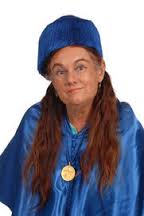
|
|
|
Kelsey Clubb Kelsey is a research assistant in the Department of Astronomy at UC Berkeley. Using telescopes at the Lick and Keck Observatories, she acquires, reduces, and analyzes observations of supernovae and stars with exoplanets with professors Alex Filippenko and Geoff Marcy. More about Kelsey and her research can be found at: |
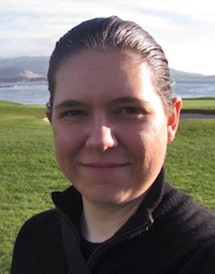
|
|
|
Elinor Gates Elinor is a staff astronomer at Lick Observatory specializing in laser guide star adaptive optics and near infrared camera instrumentation and observations. She received her Ph.D. in Physics/Astronomy from the University of New Mexico in 1998. Her current research interests are studying quasars and their host galaxies. |

|
|
|
Paul Lynam Paul is a staff astronomer at Lick Observatory. An amateur astronomer since childhood, after UK-based undergraduate studies, master's research and a Ph.D. in astrophysics (2000), he spent three years at the Max-Planck-Institute for Extraterrestrial Physics (MPE, Germany). Having attended research observatories worldwide, he then joined the European Southern Observatory (ESO, Germany) and two years later, relocated to Chile, supporting operations of the Very Large Telescope (VLT). He continued as a VLT operations astronomer until late 2010. His research includes giant galaxies, clusters of galaxies, large-scale structure and "cosmic flows." |
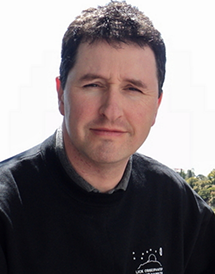
|
|
|
Patrick Maloney Pat Maloney has been actively involved with Astronomy since he ground an 8” mirror and built his first telescope as a high school freshman. He has operated telescopes for public viewing programs at various colleges and universities. He currently teaches astronomy labs at Santa Clara University. For many years, Pat has also operated the 36” and 40” telescopes for Lick Observatory’s summer evening programs. |
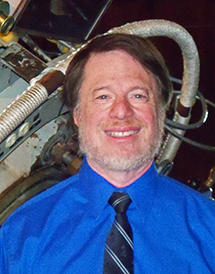
|
|